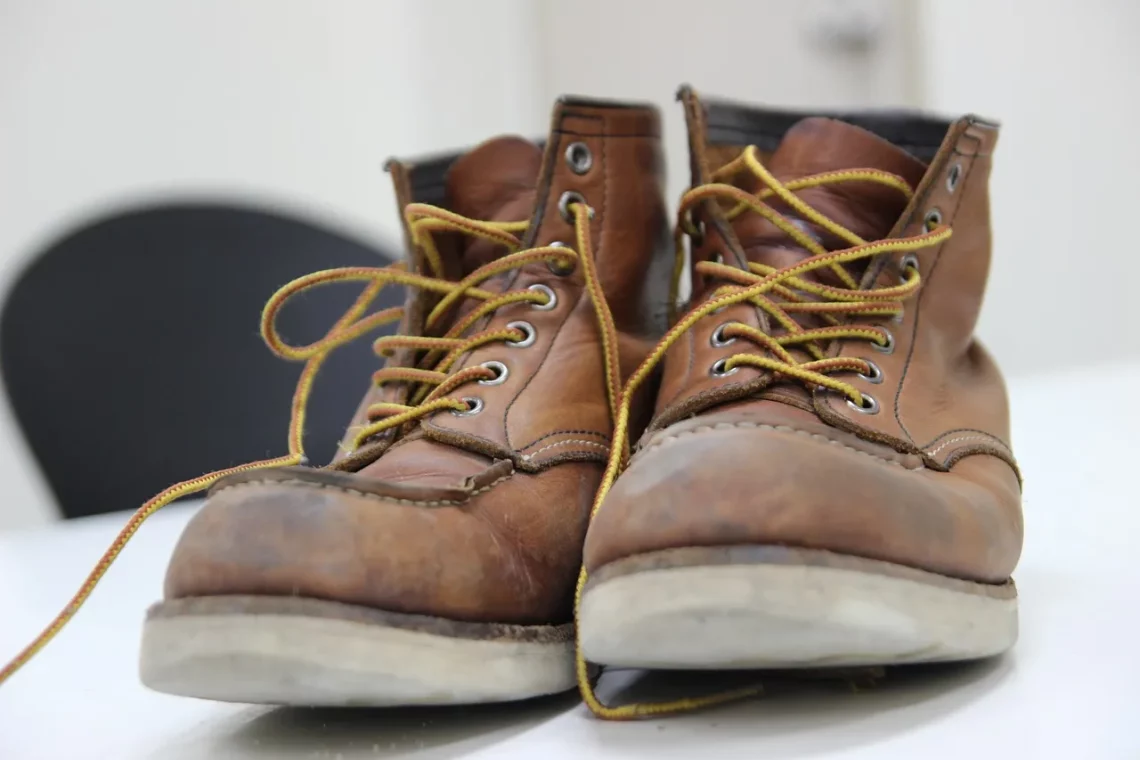
Comfortable Work Boots for Men: Style Meets Functionality
Comfortable work boots for men are more than just a piece of footwear; they represent a harmonious blend of style and functionality. In today’s ever-evolving work environment, where safety and comfort are paramount, the right pair of work boots can make all the difference. Whether you are laboring on a construction site, standing for long hours in a warehouse, or navigating the unpredictable terrain of outdoor jobs, having the right boots is crucial for optimal performance and well-being.
Work boots have undergone significant transformations over the years, shifting from purely utilitarian designs to more fashion-forward options that cater to the modern man’s aesthetic. The importance of comfort cannot be overstated, as prolonged wear can lead to foot fatigue, discomfort, and even long-term injuries. Therefore, choosing a pair of boots that provide adequate support, cushioning, and protection is essential for anyone whose job demands long hours on their feet.
Additionally, the rise of workplace safety regulations has highlighted the need for durable and protective footwear. Steel-toe caps, slip-resistant soles, and waterproof materials are now common features in many work boots, ensuring that workers are safeguarded against various hazards. This article will explore the various aspects to consider when selecting the perfect pair of work boots that balance style, comfort, and functionality.
Key Features to Look For in Work Boots
When shopping for work boots, several key features can determine whether they will meet your needs effectively. First and foremost is the material. Quality work boots are often made from leather, synthetic materials, or a combination of both. Leather boots tend to offer durability and a classic look, while synthetic options may provide lighter weight and waterproof capabilities.
Another significant aspect is the sole. Look for boots with slip-resistant soles to ensure safety on various surfaces. An outsole made of rubber is often ideal for providing traction and durability. Additionally, consider the boot’s weight; while a heavier boot may offer more protection, it can also lead to fatigue over time.
Comfort features such as cushioning and arch support are critical. Many boots now come equipped with removable insoles, allowing you to customize the fit according to your foot shape. A padded collar and tongue can also enhance comfort, preventing chafing during extended wear.
Breathability is another factor to consider, especially if you work in warm environments. Boots with ventilation or moisture-wicking lining can help keep your feet dry and comfortable throughout the day. Lastly, ensure that the boots fit well; a proper fit can prevent blisters and other foot issues.
In summary, when choosing work boots, prioritize materials, sole type, comfort features, breathability, and fit. A well-informed decision will not only enhance your comfort but also contribute to your overall productivity and safety on the job.
Styles That Suit Your Work Environment
The style of work boots you choose can significantly impact your overall appearance and comfort at work. Many industries have specific requirements or standards that may dictate the type of footwear you can wear. For instance, construction workers often opt for rugged, steel-toed boots that offer maximum protection against falling objects and punctures. These boots typically have a bulkier appearance, but advancements in design have led to options that are both sturdy and visually appealing.
In contrast, those in more corporate or client-facing roles may prefer a sleeker, polished look that still maintains the necessary safety features. Dress boots that incorporate safety elements without sacrificing style can help you present a professional image while ensuring you are protected. Look for options that feature a leather upper with a refined finish, which can easily transition from the workplace to after-hours events.
Outdoor work environments, such as landscaping or agriculture, may call for waterproof boots that can withstand wet conditions while keeping your feet dry. Styles that include reinforced toes and cushioned insoles are beneficial for workers who are on their feet for long hours in unpredictable weather.
Another growing trend is the hybrid boot, which combines elements from various styles to cater to diverse work environments. These boots can offer the support and protection needed for manual labor while also being stylish enough for casual settings.
Ultimately, the right style of work boots should align with your specific job requirements while reflecting your personal taste. A well-selected pair not only boosts confidence but also enhances your overall work experience.
Maintenance Tips for Longevity
To ensure that your comfortable work boots last as long as possible, regular maintenance is essential. First and foremost, clean your boots regularly to remove dirt and grime that can cause material deterioration. For leather boots, use a damp cloth to wipe off dirt and follow up with a leather conditioner to keep the material supple. This helps prevent cracking and extends the life of the boots.
For synthetic materials, check the manufacturer’s cleaning instructions. Many synthetic boots can be cleaned with mild soap and water, making them easier to maintain. Always allow your boots to air dry naturally rather than placing them near direct heat sources, as excess heat can damage the materials.
Inspect your boots regularly for signs of wear and tear, particularly the soles and stitching. If you notice any damage, consider taking them to a cobbler for repairs rather than replacing them entirely. This can be a cost-effective way to prolong the life of your favorite work boots.
Additionally, store your boots in a cool, dry place when not in use. Using boot trees or crumpled newspaper can help retain their shape and absorb excess moisture. Rotating your footwear can also extend the life of your boots, allowing each pair to rest and recover between uses.
Taking these simple maintenance steps can help you get the most out of your investment in comfortable work boots, ensuring they remain a reliable companion through various work challenges.
Finding the Right Fit and Size
Achieving the perfect fit is crucial when selecting work boots. An ill-fitting boot can lead to discomfort, blisters, and even long-term foot problems. Start by measuring your feet; many people are surprised to find that their shoe size can change over time. It’s best to measure your feet at the end of the day when they are slightly swollen for the most accurate sizing.
When trying on work boots, wear the type of socks you would typically use in a work setting. This can affect the fit, so don’t skip this step. Walk around in the boots to assess comfort and support. There should be enough room to wiggle your toes, and your heel should fit snugly without slipping.
Pay attention to the arch support as well. If you have flat feet or high arches, look for boots that offer appropriate support for your foot type. Some brands provide a range of widths, which can be beneficial for those with wider or narrower feet.
Finally, don’t hesitate to consult customer reviews or seek advice from knowledgeable staff at shoe stores. Many brands have their own sizing quirks, and feedback from other customers can provide valuable insights.
In conclusion, investing time in finding the right fit and size of work boots is essential for maximizing comfort and protection on the job. A well-fitted boot not only enhances your work performance but also contributes to your overall foot health.
In summary, comfortable work boots for men are an essential investment that marries style with functionality. By focusing on key features, styles suitable for various environments, maintenance tips, and ensuring the right fit, you can make a well-informed decision. Prioritizing comfort and protection will not only enhance your work experience but also promote your overall well-being.




